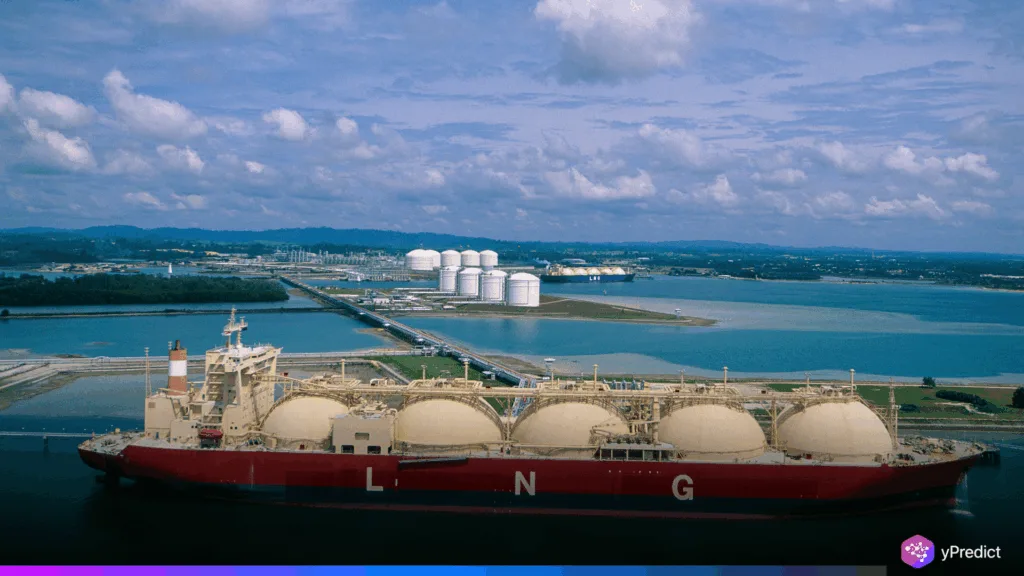
China reported a slight increase in July 2025 after months of declining LNG imports, which gave the global energy market cause for cautious optimism. China brought in 4.96 million metric tons. Compared to the 5.09 million tons imported in June 2024, this is less. Nonetheless, this falls short of the 5.92 million tons imported in July 2024. Although volumes are up 21% from the previous year, the recovery ends an eight-month downward trend. Therefore, declining energy demand and rising pipeline gas flows continue to pose challenges to the recovery outlook.
China’s LNG Imports Show Signs of Seasonal Strength
China, which was once the world’s largest purchaser of gas, has seen a sharp decline in LNG imports in 2025. The nation imported 35.17 million metric tons between January and July, compared to 44.64 million the previous year. Even so, analysts predict that by year’s end, total imports will have decreased by as much as 11%. The July gain probably represents seasonal replenishment rather than a long-term change. Additionally, softer consumption, a mild winter, and economic slowdown continue to weigh down the overall market.
Will Pipeline Gas Replace LNG Imports Soon?
China is less reliant on LNG now that it has switched to pipeline gas. In 2023, pipelines supplied 41% of its gas intake, with the majority coming from Central Asia and Russia. Additionally, Russia’s Power of Siberia 1 pipeline is expected to be fully operational by late 2025. A potential route through Kazakhstan and Power of Siberia 2 are two other pipeline projects that might improve access. Thus, these changes provide price stability and lessen dependency on erratic imports from the sea.
Can Energy Demand Recover to Support LNG Imports
The declining energy demand in key sectors continues to affect gas consumption. Additionally, a rise in the use of electric vehicles last year caused fuel demand to fall below 2021 levels. This suggests a change in structure that may eventually make China less interested in importing LNG.
Are trade tensions reshaping LNG import deals?
LNG imports have been directly impacted by trade tensions with the United States. Beijing suspended purchases in March 2025 in response to a steep 125% tariff imposed by Washington. Additionally, long-term agreements worth 20 million tons a year are now uncertain. China has since resold American cargo to Europe and moved its purchases to Qatar and Indonesia. Therefore, this rerouting increases the volatility of global supply chains and makes long-term planning more difficult for exporters.
Global Forex Faces Ripples from China’s Gas Shift
Forex markets are experiencing changes in energy flows. China’s declining demand caused Asian LNG prices to fall from $16.50 in February to $11/MMBtu in May. Thus, this lowers the cost of imports into China and lessens the pressure on the yuan. Cheaper imports benefit countries such as Japan and India, improving their trade balances. However, exporters like the US and Australia may experience a decline in demand, which could affect the performance of their currencies.
Will the July Uptick Mark a Turning Point?
China’s recent increase in LNG imports offers temporary relief but is unlikely to signal a sustained rebound. Growing pipeline gas use and the nation’s consistently low energy demand point to a long-term change in consumer behavior. Furthermore, global markets must now adjust to these changing circumstances.







